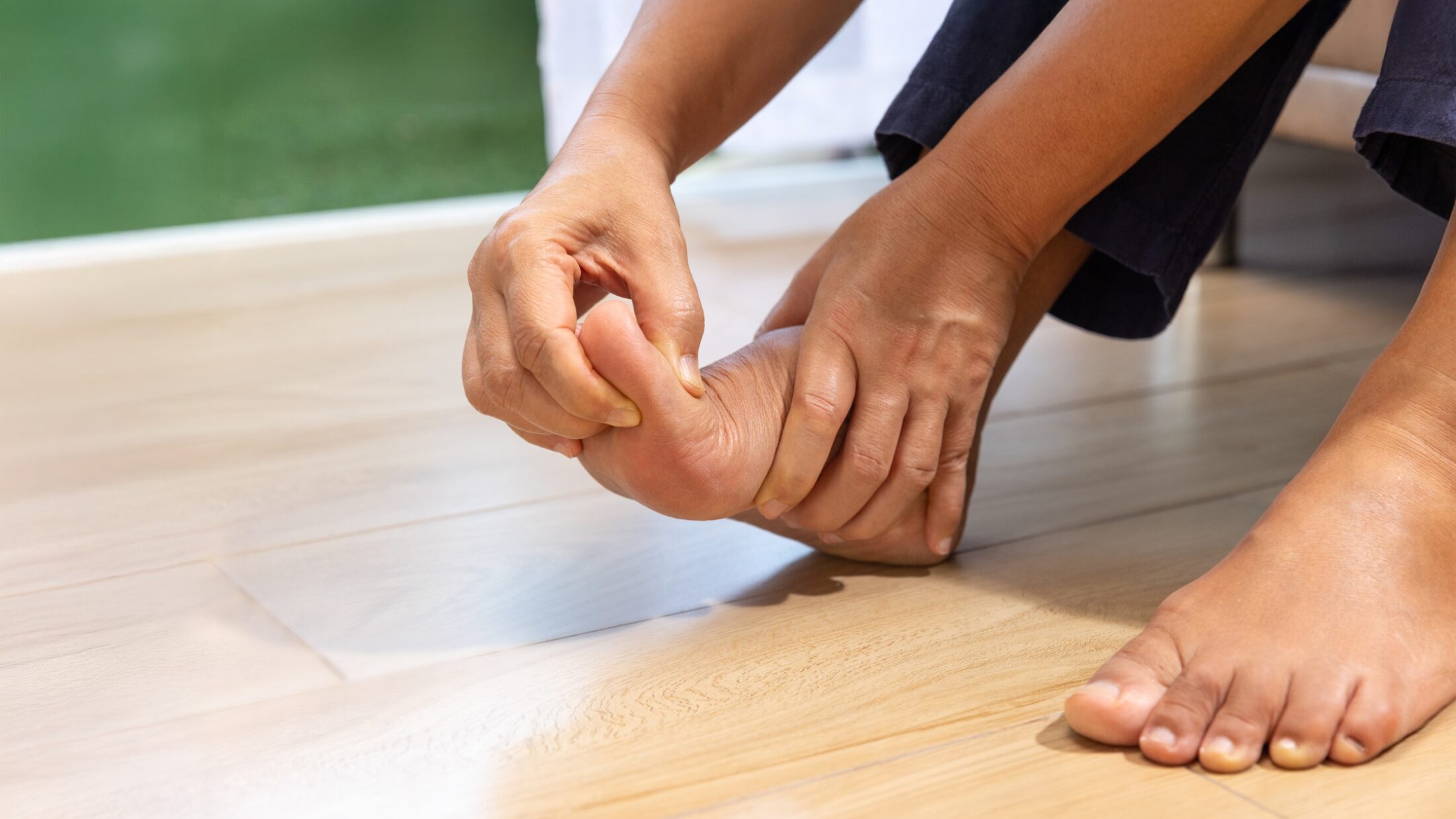Our feet support our entire body, affect posture and alignment, and keep us moving comfortably through daily life. Yet we often don’t think much about them, until something goes wrong.
Chiropodists and Pedorthists focus on different but complementary aspects of foot care. A Chiropodist diagnoses and treats foot conditions, from toenail issues and skin problems to more complex concerns like bunions, heel pain, and diabetic foot care. A Pedorthist specializes in the design and fitting of custom orthotics and footwear to correct mechanical problems and relieve pressure or pain.
Working together, Chiropodists and Pedorthists offer a well-rounded approach to foot health, treating both the symptoms and the underlying causes.
What Is a Chiropodist?
A Chiropodist, called a Podiatrist in some regions, is a regulated healthcare professional who specializes in the diagnosis, treatment, and prevention of diseases and disorders affecting the feet. Their work spans a wide range of conditions, including:
- Skin and nail issues (such as corns, calluses, fungal infections, and ingrown toenails)
- Structural deformities like bunions or hammer toes
- Foot and ankle injuries
- Circulatory and neurological complications related to diabetes
Chiropodists can prescribe medications, perform localized treatments, and carry out minor surgical procedures when needed. They also advise on preventative care, recommend exercises, and help patients choose appropriate footwear to support long-term foot health.
What Is a Pedorthist?
A Pedorthist is a healthcare specialist focused on addressing biomechanical and structural issues of the feet and lower limbs. Their expertise lies in the assessment, design, manufacture, and fitting of custom orthotics and footwear modifications to relieve pain and improve movement.
Pedorthists commonly work with patients who experience:
- Flat feet or high arches
- Plantar fasciitis or heel pain
- Joint discomfort caused by misalignment
- Diabetes-related foot sensitivity or pressure issues
Through custom insole fabrication, shoe adjustments, and personalized footwear solutions, Pedorthists aim to enhance mobility, improve foot alignment, and reduce strain during walking or standing.
Types of Chiropodist and Pedorthist Treatments
Both Chiropodist and Pedorthist treatments focus on different aspects of care. Chiropodists tend to focus on medical evaluation and treatment, while Pedorthists specialize in mechanical and structural support through footwear and orthotics.
Chiropodist Treatments
Chiropodists are trained to diagnose and medically manage a wide range of foot and ankle conditions. Common treatments include:
- Prescribing oral or topical medications for fungal infections, warts, athlete’s foot, and other dermatological conditions
- Performing minor surgical procedures, such as:
- Ingrown toenail removal
- Wart excision
- Soft tissue procedures for corns and calluses
- Administering injections (e.g., corticosteroids) for pain relief in conditions like plantar fasciitis or neuromas
For patients who struggle with mobility, chronic conditions, or nail disorders, Chiropodists provide:
- Regular nail trimming and thinning
- Corn and callus removal
- Wound and ulcer care, especially for diabetic patients
- Guidance on proper foot hygiene and at-home care
While not manufacturers themselves, Chiropodists assess gait and biomechanics to:
- Prescribe custom orthotics based on the individual’s condition and lifestyle
- Recommend appropriate over-the-counter footwear or insoles
- Refer patients to Pedorthists for complex mechanical interventions when needed
Pedorthist Treatments
Pedorthists specialize in the design and creation of custom orthotics medical-grade shoe inserts customized to the patient’s foot shape and condition. These are used to:
- Improve alignment and posture
- Reduce strain on specific areas of the foot
- Manage pain from conditions like flat feet, plantar fasciitis, or metatarsalgia
Pedorthists are highly trained in fitting and modifying footwear to accommodate a variety of foot needs. This includes:
- Extra-depth or orthopedic shoes for diabetes, deformities, or swelling
- Footwear with built-in pressure relief zones or insoles
- Custom modifications such as lifts, rocker soles, wedges, and flares to help with leg length discrepancies, mobility issues, or gait abnormalities
In addition to supplying medical-grade shoes, Pedorthists can also modify existing footwear to better support the foot:
- Stretching or reshaping tight areas
- Adding shock-absorbing materials or arch supports
- Adjusting the sole to improve movement and reduce pressure on painful areas
In some cases, Pedorthists may provide:
- Lower limb braces or ankle-foot orthoses (AFOs) to assist with walking
- Supportive devices for joint instability or muscle weakness in the lower leg
Collaborative Care
While their treatments are distinct, Chiropodists and Pedorthists often work together as part of a comprehensive care plan. For example, a Chiropodist may treat a recurring foot condition and refer the patient to a Pedorthist for a customized orthotic to help prevent recurrence or reduce mechanical strain.
How Chiropodists and Pedorthists Diagnose Foot Conditions
Both Chiropodists and Pedorthists identify and address foot-related concerns, but their diagnostic approaches differ based on their areas of expertise. While Chiropodists focus on clinical and medical evaluation, Pedorthists specialize in biomechanical assessment.
Chiropodist Diagnosis
Chiropodists begin with a thorough medical history and physical examination, assessing both the structure and overall condition of the feet. They look for:
- Visible abnormalities like swelling, redness, or deformities
- Skin and nail conditions
- Signs of infection, circulation issues, or nerve damage (especially in diabetic patients)
- Gait and posture concerns
To support diagnosis, Chiropodists may use diagnostic tools such as:
- X-rays to examine bone structure and alignment
- Ultrasound to view soft tissue injuries
- MRI or lab tests in more complex cases
- Neurological and vascular testing to assess sensation and blood flow
This approach allows them to diagnose a wide range of conditions, from ingrown toenails and warts to bunions, arthritis, and more complex medical concerns affecting the feet.
Pedorthist Diagnosis
Pedorthists focus on how the feet function mechanically and how that affects movement and comfort. Their diagnostic process centers on:
- Gait analysis for observing how a patient walks to identify abnormalities in movement
- Footwear assessment to evaluate shoe wear patterns to detect pressure points and alignment issues
- Weight distribution to determine how pressure is applied through the feet while standing or walking
- Detailed measurements of foot length, width, arch height, and more to inform orthotic design
In some cases, Pedorthists use advanced technology like:
- Pressure mapping systems to assess high-impact zones
- 3D foot scanning or computerized gait analysis for precise fitting and motion tracking
Their evaluations are geared toward understanding how foot structure and alignment contribute to pain or discomfort and how custom orthotics or footwear can help correct it.
Choosing the Right Foot Care Professional
Chiropodist and Pedorthist professionals have the expertise and skills to diagnose and treat a wide range of foot conditions, offering treatments from routine foot care to custom orthotics and specialized footwear. Regular check-ups, even when no apparent foot issues exist, contribute significantly to preventative care, ensuring early detection and treatment of potential problems.
The overall well-being that good foot health facilitates cannot be overstated. It enables you to lead an active lifestyle, free from the discomfort and limitations that foot problems can cause.
If your feet are sore, tired, or just not feeling right, it might be time for a closer look. Book a foot assessment with our certified Pedorthist. No referral needed.
Share This Story, Choose Your Platform!
Table of Contents
We specialize in orthotics, body braces, and compression wear tailored to your unique needs in Toronto. Reach out to us at info@caremed.care or call 416-782-5353 to book your fitting and consultation.
Experience the difference of customized solutions designed just for you.











